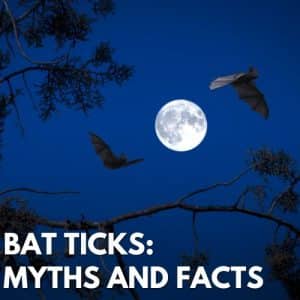
Upstate New York comprises North New York with its immediate sub-urban cities. It has warm summers and long and heavy winters and snowfall. As we already know, the northern cities of the United States, such as Northern Illinois and Northern California, have heavy winter seasons compared to other regions. Still, more people are affected by Lyme disease in Upstate New York and other northern areas compared to southern states. The change in weather and the population of rodents and deer, which serves as a host for ticks, are responsible for the ticks increase in northern parts of the United States and in Upstate New York. You can find common ticks like dog ticks, deer ticks, and lone star ticks, in the grassy and wooden regions with moist climates in Upstate New York. The tick species are increasing in human dwellings due to warm temperatures at home. So, you should know that winter will not inhibit the ticks. Instead, your preventive measures and appropriate methods will protect you from tick-borne diseases.
This blog provides complete information regarding the type of ticks in Upstate New York and how to prevent them.
Ticks in New York
Asian long-horned ticks:
The Asian Long Horned Ticks (Haemaphysalis longicornis) is an invasive species of the United States. They were abundant in East Asia, and as of 2021, they marked their territory in 17 states of the United States, including New York. The scientists initially found this in Westchester County in 2017. Westchester county is located near the southern part of Upstate New York. The long-horned tick’s preferable host could be cattle and could cause Babieosis. They can reproduce and lay eggs without mating with male ticks. They are less attracted to humans. But in 2019, CDC detected a person bitten by Asian long-horned ticks. Their active period is similar to deer ticks; they need two years to complete their life cycle. They will be involved in questing as a group. Researchers have found 50-100 female long-horned ticks. Scientists didn’t find the male long-horned ticks so far in the United States. They are reddish brown and don’t have distinct coloration in the engorged stage like other tick species in the United States.
Brown dog ticks:
The brown dog tick, scientifically known as Rhipicephalus sanguineus, has multiple other names such as kennel tick or pantropical dog tick. The brown dog tick can survive in warmer climates. These ticks can survive best in areas with tall grass, fields to first transitional zones, and wooded regions. They require a high humid climate as they absorb water from the air. These ticks, unlike most ticks, can survive and complete life cycles inside homes. It is important to check yourself and your dogs for these ticks.
How do they look?
The kennel ticks are reddish-brown in color. They measure up to 3.18 mm in length. The females, after feeding, may enlarge and become larger multiple times their actual size.
The brown dog ticks can be a host of many disease-causing agents are as follows:
- Babesia vogeli
- Ehrlichia canis
- Babesia canis
- Hepatozoon canis
- Rickettsia rickettsii
- Coxiella burnetii
- Wolbachia spp
- Rickettsia conorii
- Mycoplasma haemocanis
Some of the diseases which are caused by the above pathogens are:
- Ehrlichiosis (Ehrlichia canis)
- Canine babesiosis (Babesia canis)
- Canine ehrlichiosis
- Babesiosis
- Rocky Mountain spotted fever, caused by Rickettsia rickettsii,
- Rocky Mountain spotted fever
Feeding:
The brown dog tick feeds before moving to the next stage. The larvae feed on a host after coming out of the eggs. They feed on blood for 5 to 15 days. The nymphs feed for 3 to 13 days. After the blood meal, the nymphs may molt to become an adult brown dog tick. The adult females and males feed before mating.
Hosts:
By their name itself, one may understand that these ticks prefer dogs as hosts. The brown dog ticks prefer to consume blood from dogs in the areas behind their ears, between the toes or legs, etc.
Lone star ticks
Lone star ticks are, scientifically known as the Amblyomma americanum, also have common names such as northeastern water tick, cricket tick, or turkey ticks. These are found in various parts of Upstate New York.
Description:
Male and female lone star ticks are different from one another, called sexually dimorphic. Females can be identified by their white star-like spot on the middle of their scutum. The males have small white dots on the margins of their backs. They are reddish-brown in color. The females can be found 4 mm -6 mm in size. These ticks are oval in shape. They are flat while unfed, but after a blood meal, they may get engorged.
Diseases:
These ticks can spread the following pathogens which cause diseases such as:
Ehrlichia chaffeensis and Ehrlichia ewingii (both cause human ehrlichiosis), STARI and, tularemia. They can also cause the alpha-gal syndrome, which causes the Mammalian Meat Allergy. This is a syndrome that may be deadly at times. It is important to consult a doctor if any symptoms arise.
Life cycle of Lone Star ticks:
The brown ticks have four phases as part of their life cycle. This includes eggs, larvae, nymphs, and adults. The adult ticks are active during the months of late spring and early summer. These ticks are three-host ticks, and so they require a blood meal at every stage of their life cycle. They live near creeks, rivers, where there are shrubs, uncut grass, or even where there are wooded regions.
Blacklegged ticks
The blacklegged ticks, also known as the deer ticks, are scientifically known as the Ixodes scapularis. These ticks are capable of spreading the Lyme disease bacteria Borrelia. These ticks leave a rash known as erythema migrans or bull’s eye if they carry the Borrelia bacterium. This is a prime symptom of Lyme disease. The statistics state that about 70 to 80 percent of Lyme disease patients may see the appearance of the rash on their skin.
Immediate treatment is required to avoid any long term effects, which includes:
- Short term memory loss
- Arthritis
- Lyme carditis
Early removal can mitigate the occurrence of the disease as it takes 36 to 48 hours of biting for the tick to spread the disease to the host.
Life cycle:
Like all ticks, these ticks go through the four stages of their life cycle. According to studies, the nymph is most likely to spread the Lyme disease bacterium.
As they are hard to detect, they can carry the pathogen. Whereas the adult stages can spread the bacteria, the chances are quite low as they can be detected as they are quite big.
They are active during late spring and early summer.
Description:
They are an orangish-brown color while unfed. They are bluish-green after feeding. The female ticks are ⅛ inch in size while males are 1/16 inch. Like all ticks, the nymphs, which everyone should look out for, have six legs while the adults have eight legs.
Other diseases they may spread are:
- Anaplasmosis.
- Ehrlichiosis.
- Babesiosis.
- Powassan virus disease.
- Borrelia miyamotoi disease.
American dog ticks:
American dog ticks are also known as wood ticks. These ticks are brown in color and have white or gray markings on their body. They can grow from 5 mm to 15 mm in length. The females are bigger than the males. The females tend to get bigger in size after feeding.
Disease transmission:
- Tick paralysis
- Tularemia
- Rocky Mountain Spotted Fever
Feeding habits:
The American dog ticks find hosts using the scent of the animals. They tend to prefer large mammals, including humans. So they are likely to be found on the side of roads.
These ticks are present in shrubs and grass. These ticks may feed on large mammals such as dogs, humans, etc.
The dogs are likely to bring this to the homes of humans and hence transfer it to them. They may survive without a meal for 2 to 3 years.
Where To Send Ticks For Testing In NY?
The New York Residents can send their ticks to a free ticks testing lab in NY. The Upstate Medical University has initiated this free tick testing process. The ticks testing lab located in Syracuse, NY, aims at spotting tick-borne diseases in New York. So, the general public can send the ticks for testing at free cost. The Upstate Medical University tests the identification of tick species and the pathogen it carries. If you send a black-legged tick, they can test the ticks for Lyme disease pathogens. The results will help you to understand the tick infestation in your location. Since the process of tick testing is automated, you should send the ticks according to the instructions they mentioned.
To send your samples for tick testing, click here.
Tick Dragging:
Tick dragging is the process of dragging ticks in tick habitat. The tick dragging collects ticks from outdoor tick habitats such as forests and grasslands. In this process, the researchers will select the location based on the black-legged tick infestation in an area because it causes more tick-borne diseases than other tick species. The people will also determine the ticks infestation area based on the population of dog ticks and gulf coast ticks. While dragging the cloth near vegetation, it creates a vibration, so the ticks in the questing position will get attached to this cloth. This method involves a white cloth of one square yard. The tick draggers will tie the cloth in a white rope. The person who does this process should maintain a constant horizontal walk with a steady flow. In this process, we can collect 10-15% ticks in a particular area. This process is preferable for managing ticks in tick active seasons, such as summer and spring. The person should check the cloth every 10 meters to check whether there are any ticks in the fabric. They may lose the tick if they don’t check their white cloth every 10 meters.
In New York, researchers selected three locations for tick dragging activity in 2020. They are in the Lower Hudson Valley, Long Island, and the Capital Region of New York. The places chosen for this process are near and within Upstate New York. The scientists found Lyme disease and other disease-causing pathogens in the deer ticks. This research has solved the myth that one tick can only have one tick-borne condition. The scientists found that ticks could carry more than one pathogen to the host.
Precautions:
Ticks may get stuck to your body during the tick dragging process. So it is essential to wash and dry the clothes after this process. You should look for ticks in all the parts of your body thoroughly. If you found the tick, use tweezers to remove the ticks. For a complete guideline about ticks in your body, click here.
Preventing Tick Bites in Upstate New York
- Avoid contact with soil and leaf litter in tick-infested areas.
- Prefer wearing light-colored clothing with tight weaves that might help you spot the tick.
- Cover your clothes fully and prevent body contact with ticks. Tuck your pants, wear full sleeves and button them while trekking or during mountain camps.
- Use skin-friendly insect repellents while you are traveling through tick-infested areas.
- Avoid sitting directly on the stone walls or the floor.
- Have a tick-checklist as a handy before your outdoor adventure.
Conclusive Words
Ticks are prevalent all over New York, and it is best recommended to keep yourself away from ticks. Many preventive measures are available, which they can follow. Microbiologists and Immunologists are working to come up with vaccines for tick-borne diseases. But it is important to prevent tick bites by taking certain precautions. If ticks bite you, use appropriate tick removal measures to ensure there is no contraction of diseases. If symptoms of any disease occur, it is crucial to meet a medical practitioner.
Check your pets regularly for ticks to keep them away from tick-infected diseases.


